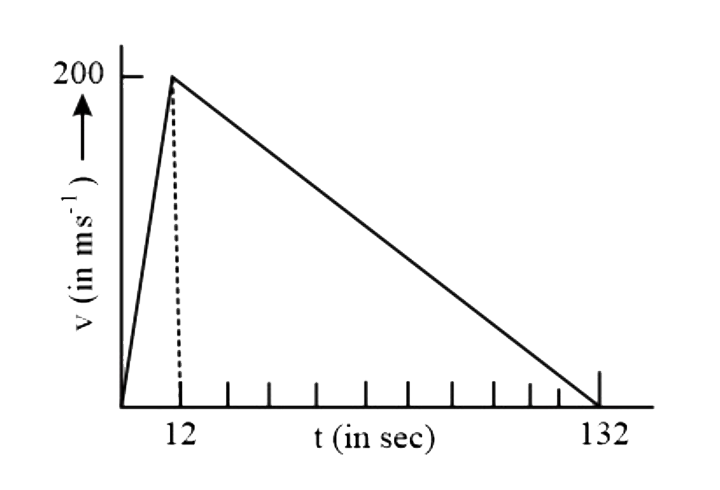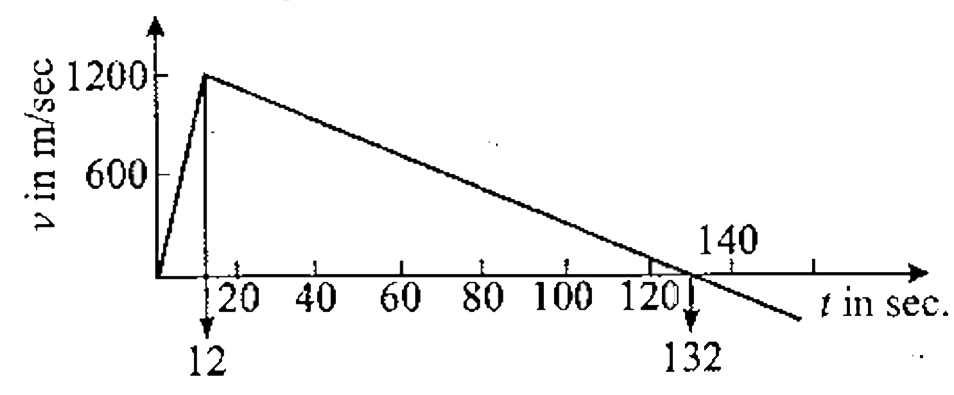A rocket has been fired upwards to launch a satellite in its orbit. Name the two forces acting on the rocket immediately after leaving the launching pad.
To solve the question about the forces acting on a rocket immediately after it leaves the launching pad, we can follow these steps:
Step 1: Identify the Forces Acting on the Rocket
When a rocket is fired upwards, two primary forces act on it immediately after leaving the launching pad. These are:
1. Gravitational Force (Weight): This force acts downward towards the center of the Earth. It is the force of gravity acting on the mass of the rocket.
2. Thrust Force: This is the force exerted by the rocket engines as they expel fuel downwards. According to Newton's third law of motion, for every action, there is an equal and opposite reaction. Thus, when the rocket expels fuel downwards, it experiences an upward thrust.
Step 2: Name the Forces
Based on the identification of the forces, we can name them as follows:
1. Gravitational Force (Weight) - denoted as Fg.
2. Thrust Force - denoted as Ft.
Final Answer
The two forces acting on the rocket immediately after leaving the launching pad are:
1. Gravitational Force (Weight)
2. Thrust Force
---
When a rocket is fired upwards, two primary forces act on it immediately after leaving the launching pad. These are:
2. Thrust Force: This is the force exerted by the rocket engines as they expel fuel downwards. According to Newton's third law of motion, for every action, there is an equal and opposite reaction. Thus, when the rocket expels fuel downwards, it experiences an upward thrust.
Based on the identification of the forces, we can name them as follows:
2. Thrust Force - denoted as Ft.
The two forces acting on the rocket immediately after leaving the launching pad are:
1. Gravitational Force (Weight)
2. Thrust Force
Topper's Solved these Questions
- FORCE AND PRESSURE BOOK - MTG IIT JEE FOUNDATIONCHAPTER - FORCE AND PRESSURE EXERCISE - EXERCISE (MULTIPLE CHOICE QUESTIONS LEVEL-I)
30 Videos
- FORCE AND PRESSURE BOOK - MTG IIT JEE FOUNDATIONCHAPTER - FORCE AND PRESSURE EXERCISE - EXERCISE (MULTIPLE CHOICE QUESTIONS LEVEL-2)
22 Videos
- FORCE AND PRESSURE BOOK - MTG IIT JEE FOUNDATIONCHAPTER - FORCE AND PRESSURE EXERCISE - SOLVED EXAMPLES
14 Videos
- FOOTSTEPS TOWARDS NEETBOOK - MTG IIT JEE FOUNDATIONCHAPTER - FOOTSTEPS TOWARDS NEETEXERCISE - MCQ
45 Videos
- FRICTION BOOK - MTG IIT JEE FOUNDATIONCHAPTER - FRICTION EXERCISE - OLYMPIAD/HOTS CORNER
15 Videos
Similar Questions
Knowledge Check
Once a satellite has been launched into orbit, the only force governing its motion is the force of ______ .
AgravityBelasticityCfrictionDfuel drivenOnce a satellite has been launched into orbit, the only force governing its motion is the force of ______ .
AA) gravityBB) elasticityCC) frictionDD) fuel drivenA rocket is fired upwards, its engine explodes fully in 12 s. The height reached by the rocket as calculated from its velocity - time graph is
 A13200 mB158400 mC18400 mD15400 m
A13200 mB158400 mC18400 mD15400 m
A launching pad with a spaceship is moving along a circular orbit of the moon, whose radius R is triple that of moon Rm. The ship leaves the launching pad with a relative velocity equal to the launching pad's initial orbital velocity →v0 and the launching pad then falls to the moon. Determine the angle θ with the horizontal at which the launching pad crashes into the surface it its mass is twice that of the spaceship m.
View SolutionThe satellites when launched from the earth are not given the orbital velocity initially, a multistage rocket propeller carries the spacecraft up to its orbit and during each stage rocket has been fired to increase the velocity to acquire the desired velocity for a particular orbit. The last stage of the rocket brings the satellite in circular/elliptical (desired) orbit.
Consider a satellite of mass 150kg in a low circular orbit. In this orbit, we cannot neglect the effect of air drag. This air opposes the motion of satellite and hence the total mechanical energy of earth-satellite system decreases. That means the total energy becomes more negative and hence the orbital radius decreases which causes the increase in KE When the satellite comes in the low enough orbit, excessive thermal energy generation due to air friction may cause the satellite to burn up. Based on the above information, answer the following questions.
It has been mentioned in the passage that as r decreases, E decreases but K increases. The increase in K is [E= total mechanical energy, r= orbital radius, K= kinetic energy ]
View SolutionLiquid fuel is burnt in a rocket and its exhaust gas is rejected from its tail at a velocity of 10km/s. The force acting on the rocket is 2×104N. At what rate the liquid fuel is burnt?
View SolutionThe satellites when launched from the earth are not given the orbital velocity initially, a multistage rocket propeller carries the spacecraft up to its orbit and during each stage rocket has been fired to increase the velocity to acquire the desired velocity for a particular orbit. The last stage of the rocket brings the satellite in circular/elliptical (desired) orbit.
Consider a satellite of mass 150kg in a low circular orbit. In this orbit, we cannot neglect the effect of air drag. This air opposes the motion of satellite and hence the total mechanical energy of earth-satellite system decreases. That means the total energy becomes more negative and hence the orbital radius decreases which causes the increase in KE When the satellite comes in the low enough orbit, excessive thermal energy generation due to air friction may cause the satellite to burn up. Based on the above information, answer the following questions.
If due to air drag, the orbital radius of the earth decreases from R to R−△R,△R<<R, then the expression for increase in the orbital velocity △v is
View SolutionA rocket is fired upwards. Its velocity versus time graph is shown in the figure-1.131. The maximum height reached by the rocket is:

View Solution
